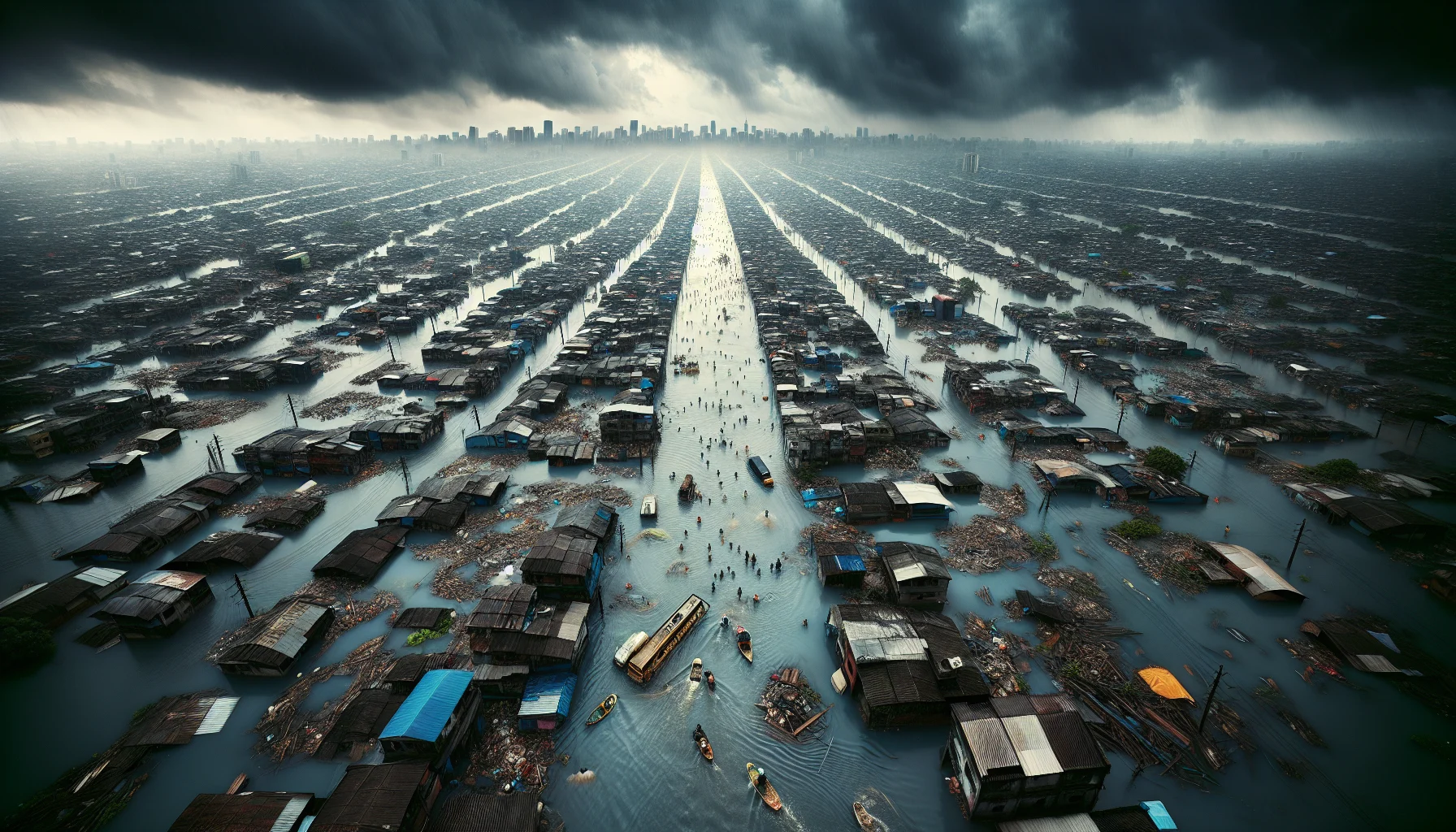
2007 Jakarta Flood
by: The Calamity Calendar Team
February 1, 2007
A Deluge Begins
The Southeast Asian city of Jakarta is a sprawling, vibrant metropolis teetering on the edge of nature’s impulses. February 2007 was a stark reminder of nature's dominance when torrential monsoon rains descended upon this bustling capital. For days, heavy downpours battered Jakarta, pushing an already fragile drainage system to its limits and beyond. The deluge was not only a test of Jakarta’s infrastructure but also of human tenacity and resilience in the face of overwhelming natural forces.
Before February unfolded, Jakarta sat precariously with saturated ground conditions, the consequence of earlier monsoon rains. The city, which housed approximately 9 million residents, sprawled over low-lying lands interlaced with rivers and canals, struggling to sustain rapid urban growth and increasingly severe weather patterns. The waterways that were intended to protect the city became conduits for disaster, choked with debris and waste that severely hampered their function. In dire irony, what should have been lifelines turned into highways of havoc.
The Waters Rise
On February 1, rain began its relentless assault. As drops hammered down, the city's underprepared drainage system quickly became overwhelmed. The streets, familiar and comforting, were rapidly transforming into foreign landscapes of rising water. By February 3, entire neighborhoods were submerged under up to four meters of water, the roads morphing into rivers, isolating families, and halting daily life. A critical infrastructure crumbled—transportation and communication systems buckled, severing connections between communities and loved ones.
The devastation was vast. Around 70% of Jakarta found itself underwater, caught in the jaws of a historic flood by February 4—a breach that would encompass over a week of struggling against the tide. Thousands were forced to leave behind homes filled with memories and find respite in makeshift shelters scattered across the city. These temporary refuges reflected both human empathy and despair, with efforts to care for the displaced met with logistical challenges. The evacuees, numbering in the hundreds of thousands, faced nights in unfamiliar beds, hearts heavy with uncertainty for the days ahead.
Coping with Chaos
As the rains beat down from above, the rising waters pressed from below. From February 4 to 6, Jakarta bore the flood’s peak. Efforts to contain and manage the crisis faltered under the sheer scale of luxury turned survival challenge. The flood reached households finely balanced between comfort and vulnerability, highlighting discrepancies between rigid urban aspirations and nature's relentless dynamism. By February 7, a state of emergency was declared as the rain mercifully began to ease, yet the waters lingered, a stubborn reminder of the ordeal.
Poor drainage, exacerbated by blocked channels, hindered the natural recession of floodwaters. Life teetered on the brink of anarchy as sanitation became a looming crisis. Water receded slowly, grudgingly, revealing a city deep in the throes of calamity. Streets appeared, marred and broken, and homes stood damaged, whispering tales of survival and ruin.
Thanks for subscribing!
The Cost
When Jakarta finally emerged from its watery tomb, the price of the flood was starkly clear. Human lives were tragically lost—at least 80 souls perished, casualties of nature's fierce embrace. Yet the real cost extended far beyond these grim statistics, touching every facet of the city's fabric. Over 400,000 people were displaced, their lives upended and material possessions forever altered. Damage estimates soared into the billions—approximately IDR 8 trillion (about USD 879 million), a chilling testament to the destruction visited upon homes, businesses, and infrastructure alike.
Commerce shuddered to a painful halt as central business districts sat waterlogged and paralyzed. The engines of Jakarta's economy fell silent, their potential drowned. It would take significant investments and efforts to restore them to life, a task formidable enough to daunt even the most heel-diggish optimists. As recovery wore on, the echoes of the flood resounded in the cracks of the city’s scaffolding and the resilience of its citizens.
Moving Forward
In the wake of the disaster, the government and myriad NGOs coordinated a patchwork tapestry of relief and recovery efforts. Temporary shelters, food supplies, clean water, and medical aid converged upon shattered neighborhoods, with the aim of bringing hope and healing to the flood-battered populace. Rebuilding demanded not just brick and mortar, but a reconsideration of the foundations of the city itself—a daunting workflow of repairs compounded by the realities of recurrent natural threats.
The 2007 Jakarta flood became a narrative laid in cautionary terms, underscoring the urgency to revise and renew Jakarta’s infrastructure and urban planning strategies. But progress was a marathon, not a sprint. Despite advancements in technology and preparation, challenges persisted as Jakarta’s infrastructure lagged behind, determined to outpace a climate marching in complexity and intensity. Today, modern efforts reflect a shift from reaction to prevention, incorporating technology for prognostic flood warnings and innovative river management.
The floodwaters of February 2007 eventually retreated, but they left an indelible mark on Jakarta. The city stands as a testament to the dual nature of nature’s power—it can be a fountain of sustenance as much as it can be a harbinger of ruin. More than a decade later, memories of the flood nudge the city to equip itself with resilience for inevitable future battles with the elements, understanding that life on the cusp of the tropical seas will always be an uneasy marriage of hope and preparedness.
Stay in the Loop!
Become a Calamity Insider and get exclusive Calamity Calendar updates delivered straight to your inbox.
Thanks! You're now subscribed.